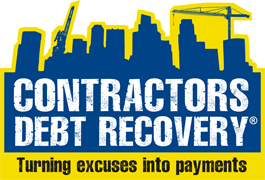The Power of Site Diaries
A well documented religiously kept Site Diary is one of the best things you can do to protect the value of your work in a Payment dispute, yet it is one of the rarest things to find. And I’m not talking about a normal calendar diary in which you scribble a few notes here and there. I am talking about a diary specifically there to capture the great number of details and key events that happen every day on your site.
In most payment disputes the parties will argue a different (very different) version of events. It is important that you can prove your version. The way to do that is to keep a daily site diary. If you can demonstrate that you record events each day, then this document becomes ‘contemporaneous evidence’ that you can use in adjudication or other proceedings.
So what are some of the things you should record? Here are some that will make all the difference in a payment dispute:
Contract Work done v Variation Work done
The biggest argument for non payment is either ‘the work is part of your scope’ or ‘It was never approved or requested’.
You should detail the contract work done by reference to your scope of works. That way there can no argument that it is contract work. By contract you can then record the variation work done. This work will not be found in the scope of works and so is additional. The final things is to record how the variation was requested; written or oral. Record who requested it, and if written include the details of the written instruction.
Old Drawings V New Drawings
Another massive are of argument is revised drawings that require additional work. The debtor will argue that the new drawings should not attract any additional cost. The best thing to do is diarise the date you were issued new drawings and note the drawings they replaced. You should also send your client a quote to carry out the additional work in the drawing, and diarise that too. In this way you can follow how the scope required grew, and the dates it grew, and by what value. Many times clients will try to insist that the new drawing is the one issued all along and that there never was an earlier version. A good diary will sort that one out.
Oral Directions
So often a client will give numerous oral directions that add up to a whole range of additional work. What needs to be detailed here are all those directions that create a variation. That way the client cannot use the usual tactic of simply denying that the work was ever requested. If you can match the date the request was made with other evidence about the work, then one document backs up the other. This makes for great evidence.
Staff Onsite
Often there is a dispute about labour hours. The client will usually argue that the job could not have taken that long, or that there was no staff onsite. You need to diarise who was onsite every day. That way you can support the hours claimed.
Delays
Most contracts will not allow you to claim for delays. However in many contract the client will attempt to hit you with liquidated damages. A site diary can help you record exactly who delayed work each day, and for how long. Often the delay is caused by another party or by circumstances beyond your control. Sometimes an authority such as local council or WorkCover, or an energy authority will require work to cease for while. All this needs to be diarised so you can prove that you did not hold up the work.
And always check the contract to see if you need to apply for an extension of time. And if so, do it immediately.
Photos
Regular readers of my articles will now that I am a great fan of the photo. It really is first class evidence for anything. If you have completed an item of work, take a picture. If another trade has damaged your work, take a picture. Try to get the date stamp on each photo and each day record the photos you have taken. So often a debtor will argue that the contractor left some work defective or that it was never completed correctly. Or that the contractor damaged some of the works. A good series of photos can crush these allegations pretty quick.
Of course you want the usual stuff too like the day and date and who from your business completed the day entry.
The most important things to bear in mind is that one day of diary entries is not what helps you: It is the ability to show months and years of entries that will give your diary almost unbeatable credibility.
So get those pens at the ready and get it in the diary! It will save you a fortune.
